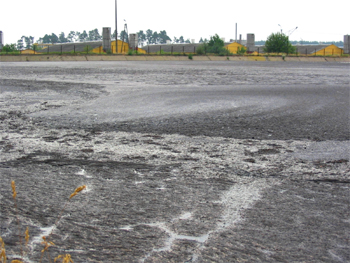
On November 24th 2011 the European Commission sent Poland a reasoned opinion about their inadequate action programmes for zones vulnerable to nitrate pollution (NVZ). These programmes, which were implemented by the Nitrates Directive, aim to protect water quality across Europe – preventing nitrates from factory farms polluting ground and surface water by promoting the use of good farming practices. Member States must adopt measures to reduce and prevent nitrate pollution in the areas already contaminated. These include closed periods when manure and chemical fertilizers cannot be spread, limitations on fertilizer application and the use of mechanisms to provide sufficient capacity for storing manure when it cannot be spread.
When Poland became a member of the EU in May 2004, there were only 21 nitrate vulnerable zones in six regions of the country. They were designed based on the results of water monitoring from1990 to 2002 and covered an area of 6,263 square kilometers: 2% of Polish territory. According to Dutch research conducted at Wageningen University and sponsored by the European Commission, the designation of these zones in Poland should more greatly reflect the enormous level of nitrates in the Baltic Sea and the major role played by the spreading fast intensive animal production.
Current actions including NVZ designation in Poland are clearly are not fullfilling this requirement and the European Commission is of the opinion that Poland has not yet designated all the zones which are vulnerable to nitrate pollution – if Poland fails to comply within two months, the Commission may decide to refer the case to the Court of Justice of the European Union. Although legislation should have been in place since Poland’s accession to the EU in 2004, Polish laws still contain numerous shortcomings in this area. Not only has Poland not identified (and as a consequence not sufficiently designated) nitrate vulnerable zones, its action programmes also continue to fail to fully comply with the requirements of the Nitrates Directive, which was implemented because the European Commission came to conclusion that intensive farming is the main source of water contamination.
The Baltic Sea sees high levels of eutrophication caused by nitrates and phosphorus – the biggest source being rivers. Polish rivers transfer 25 to 50% of all nitrates and phosphorus that reach the Baltic Sea, roughly 60% of all nitrogen and 40% of all phosphorus delivered originate from factory farms. This data shows that the environmental situation of Poland is a major factor in the Baltic Sea’s biological survival. We need to remember that the Baltic Sea is receiving water from an area of 1.7 million of square kilometres, where live 80 million people. 99% of Polish territory with 38 million people is in the drainage basin of this sea covering 311 thousand square kilometres. The Polish population consists of 50% of the whole population of the Baltic Sea drainage basin.




